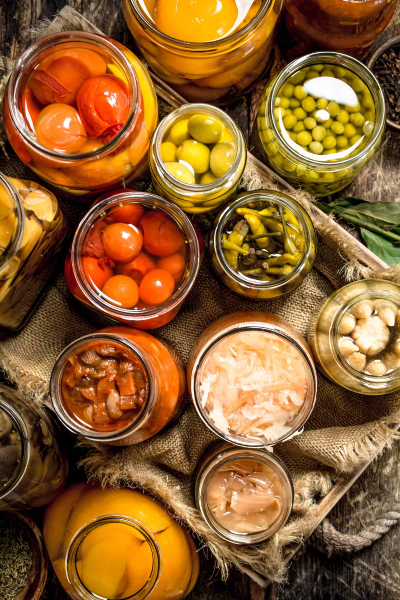
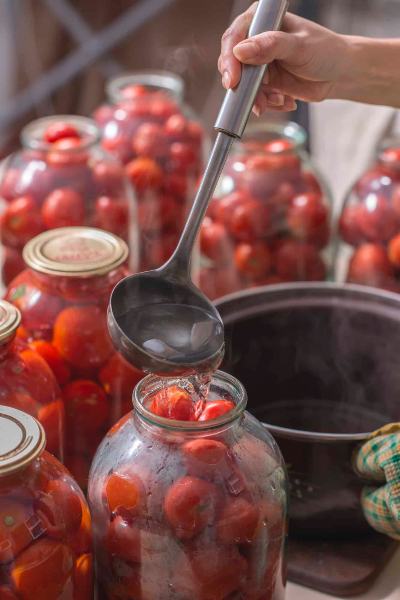
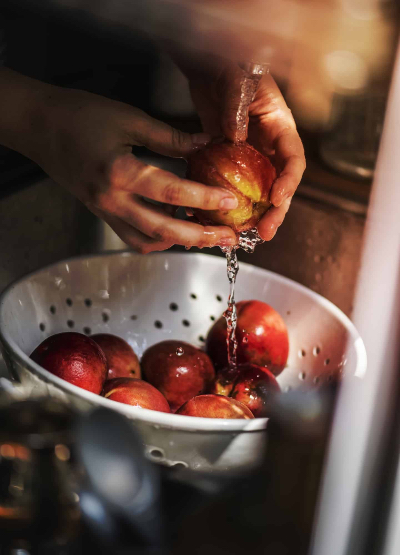
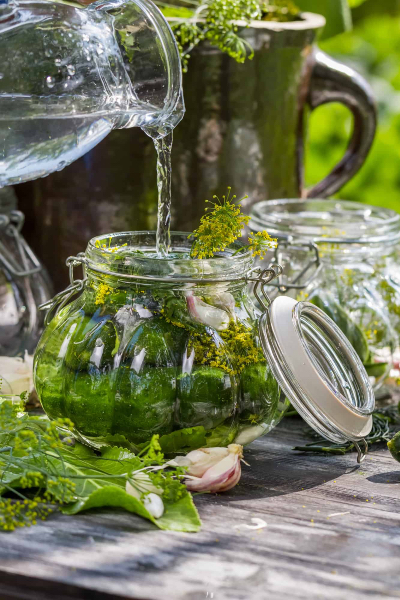
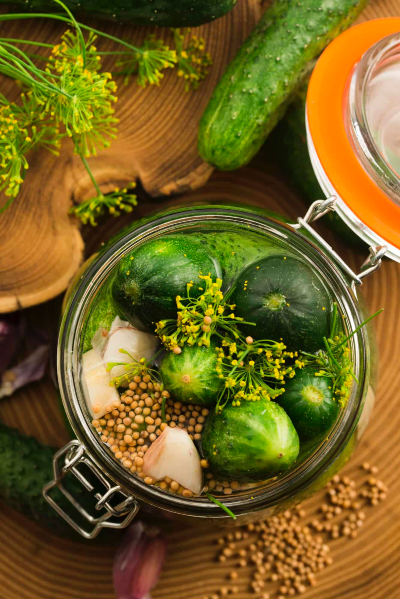
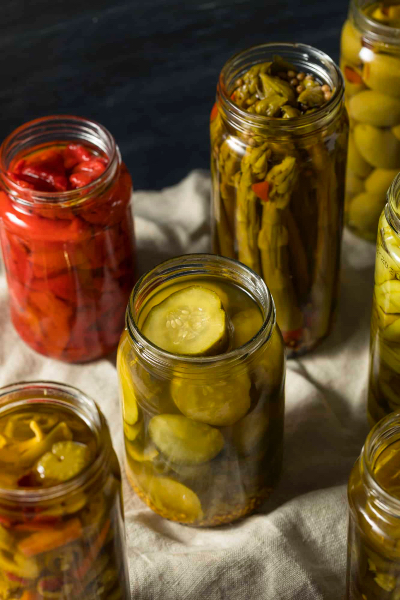
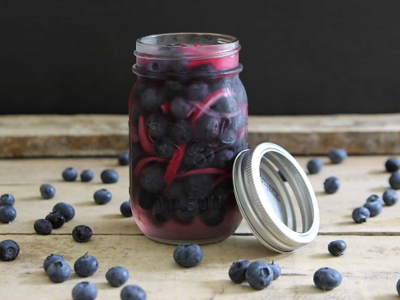
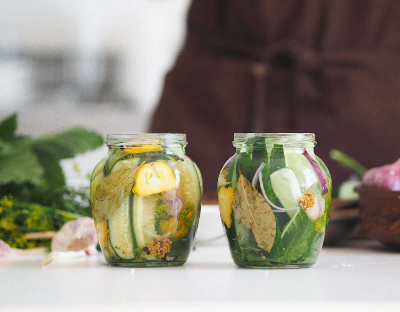
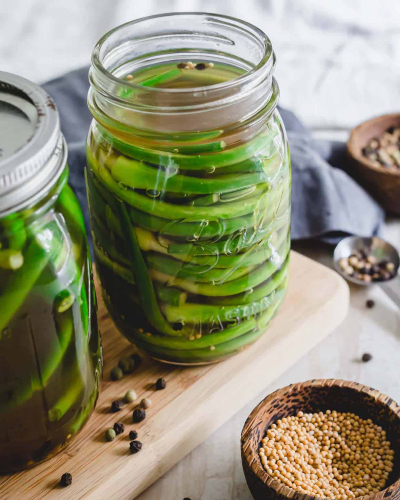
Pickling 101
Learn the art of quick pickling fruits and vegetables to create tasty snacks, condiments and garnishes for all sorts of dishes.
Looking to add some zing to your meals? Quick pickling is the perfect solution. With just a few simple steps, you can transform ordinary produce into tangy, flavorful snacks and condiments that will elevate any culinary experience.
Pickling is an age-old preservation method that has been used for centuries to extend the shelf life of fruits and vegetables. This process not only helps to keep produce fresh for longer but also imparts a tangy, sour flavor that enhances the taste of many dishes.
Quick-pickling is a simple and easy way to try your hand at pickling without having to invest in any special equipment or dedicate too much time. In as little as 30 minutes, you can have a quick-pickled ingredient ready for any use.
Learn the basics of pickling and walk through the steps of quick pickling your favorite fruits and vegetables.
Looking to add some zing to your meals? Quick pickling is the perfect solution. With just a few simple steps, you can transform ordinary produce into tangy, flavorful snacks and condiments that will elevate any culinary experience.
Pickling is an age-old preservation method that has been used for centuries to extend the shelf life of fruits and vegetables. This process not only helps to keep produce fresh for longer but also imparts a tangy, sour flavor that enhances the taste of many dishes.
Quick-pickling is a simple and easy way to try your hand at pickling without having to invest in any special equipment or dedicate too much time. In as little as 30 minutes, you can have a quick-pickled ingredient ready for any use.
Learn the basics of pickling and walk through the steps of quick pickling your favorite fruits and vegetables.
Traditional Pickling vs. Quick Pickling
Traditional pickling and quick pickling are two methods of preserving food using vinegar, salt, and other flavoring ingredients. The main difference between them is the time required for the pickling process.
Traditional pickling is a longer process that involves immersing food in sterilized glass jars with a brine solution of vinegar, water, salt, and spices then using the water-bath method to can the ingredients. Traditionally pickled foods have a very long shelf life — they can last for years.
Quick pickling is a faster process that involves bringing the pickling solution to a boil and then pouring it over the food. The food is then allowed to sit in the solution for a shorter period of time, from as little as 30 minutes to as long as overnight, before eating.
Quick pickled foods tend to be fresher with a crunchier texture and more mild flavor compared to traditional pickling.
Traditional pickling is a longer process that involves immersing food in sterilized glass jars with a brine solution of vinegar, water, salt, and spices then using the water-bath method to can the ingredients. Traditionally pickled foods have a very long shelf life — they can last for years.
Quick pickling is a faster process that involves bringing the pickling solution to a boil and then pouring it over the food. The food is then allowed to sit in the solution for a shorter period of time, from as little as 30 minutes to as long as overnight, before eating.
Quick pickled foods tend to be fresher with a crunchier texture and more mild flavor compared to traditional pickling.
How to Quick Pickle Anything
Refrigerator pickles are probably the most popular food to make with the quick pickle method but almost any fruit or vegetable can be used.
Preparing the Fruits and Vegetables
Quick pickling is best done with very fresh vegetables or fruit. Vegetables that are past their prime or have been sitting in the fridge for too long may not hold up well during the pickling process. Leave bruised produce for recipes where it’s not the main focus such as slow cooker meals or baked desserts.
The fruit or vegetable can be prepared in a variety of ways:
- Left whole: Pearl onions, berries, green beans
- Sliced: Carrots, zucchini, onions, peppers, radishes, melon
- Spears: Cucumber, pineapple, asparagus
Brining Basics
There is no special equipment needed for quick pickling but you will need the following to make a basic brining solution:
While white vinegar is the most common, but almost any basic vinegar* can work including apple cider vinegar, rice vinegar, red wine vinegar, and white wine vinegar. It’s best to avoid using aged types of vinegars such as balsamic. The acidity can be too weak, the viscosity too thick, and their malted flavor can impact the final outcome of the pickled fruit or vegetable.
- Boiling water
- Vinegar*
- Salt
- Sugar
- Garlic cloves
- Whole peppercorns
- Bay leaves
- Fresh or dried herbs
- Whole spices
While white vinegar is the most common, but almost any basic vinegar* can work including apple cider vinegar, rice vinegar, red wine vinegar, and white wine vinegar. It’s best to avoid using aged types of vinegars such as balsamic. The acidity can be too weak, the viscosity too thick, and their malted flavor can impact the final outcome of the pickled fruit or vegetable.
Assembly
Pack the prepared fruit or vegetables tightly into a glass jar along with any chosen flavoring agents. Leave a half-inch space between the rim of the jar and the top of the produce.
Place the vinegar, sugar, salt, and boiling water into a bowl or measuring cup and whisk until the salt and sugar completely dissolve. Pour the brine into the jar until just covering the fruit or vegetables.
Screw on the lids of the jars and let sit until cooled to room temperature. Transfer to the refrigerator to chill and store.
A 24 to 48 hour incubation time will provide the best tangy pickled flavor but this can be adjusted based on needs and taste preferences.
Place the vinegar, sugar, salt, and boiling water into a bowl or measuring cup and whisk until the salt and sugar completely dissolve. Pour the brine into the jar until just covering the fruit or vegetables.
Screw on the lids of the jars and let sit until cooled to room temperature. Transfer to the refrigerator to chill and store.
A 24 to 48 hour incubation time will provide the best tangy pickled flavor but this can be adjusted based on needs and taste preferences.
whenever a dish needs a pop of flavor or color, quick pickled veg save the day! the acidity in the pickle balances sweetness and richness and can transform a ho-hum dish into an amazing one!
-- jennifer allen, cook what you love
For more ideas and recipes on how to use your quick pickles,
visit At the Immigrant's Table.
visit At the Immigrant's Table.
* - (You can also use other acids, such as citrus juice, especially lemon, lime, and yuzu instead of vinegar, and they don't require boiling. See Ginger Chicken with Spicy Pickles for a great example!)

